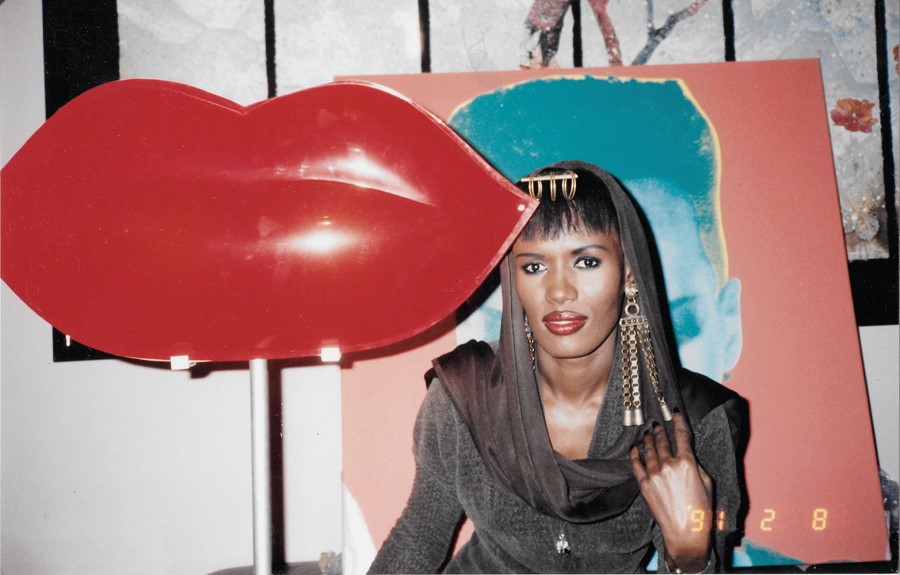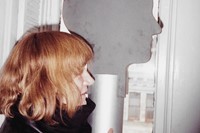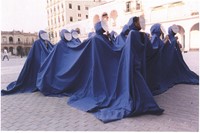Published by Apartamento, Nicola L: Life and Art is the first book to commemorate the artist’s confrontational work. Here, its editors Omar Sosa and Hannah Martin talk us through five key pieces
“I think this book would have been very different if Nicola hadn’t died, and I’m not sure it would have been better.” Apartamento co-founder Omar Sosa and Architectural Digest senior editor Hannah Martin embarked on writing Nicola L: Life and Art some time prior to the genre-fluid artist’s death in 2018, but they stress that she had no involvement in the process. “I think she would have driven us all completely crazy, but it would have been fun for sure – probably much more fun,” adds Sosa.
Born in Morocco in 1932 to French parents, Nicola L spent her formative years in Paris attending the Beaux-Arts. In 1965 she burnt her paintings as a response to her motives as a painter being scrutinised by a friend, and by 1969 she was attempting to penetrate immovable surfaces with her body and scouring the streets of New York City for the perfect vinyl to create a giant human foot with. Published by Apartamento, Nicola L: Life and Art is the first book to commemorate the artist’s life and work, and is something of an homage to her profoundly odd, aesthetically confrontational work.
As is apparent in the many anecdotes that punctuate the book – shared by Nicola’s close family and friends – it is impossible to separate her lived experience from her creative output. Individually, parts of the artist’s story feel familiar; friendships with Andy Warhol, dalliances with Salvador Dalí, Ibiza and Paris eras, and extended stays at the Chelsea Hotel are all great 20th-century artist bingo card wins, but none of these things managed to define her. She lived without boundaries, skirting the edges of various movements, committing to none of them, and creating art accordingly.
Below, Omar Sosa and Hannah Martin – editors of Nicola L: Life and Art – walk us through five of the artist’s key pieces.
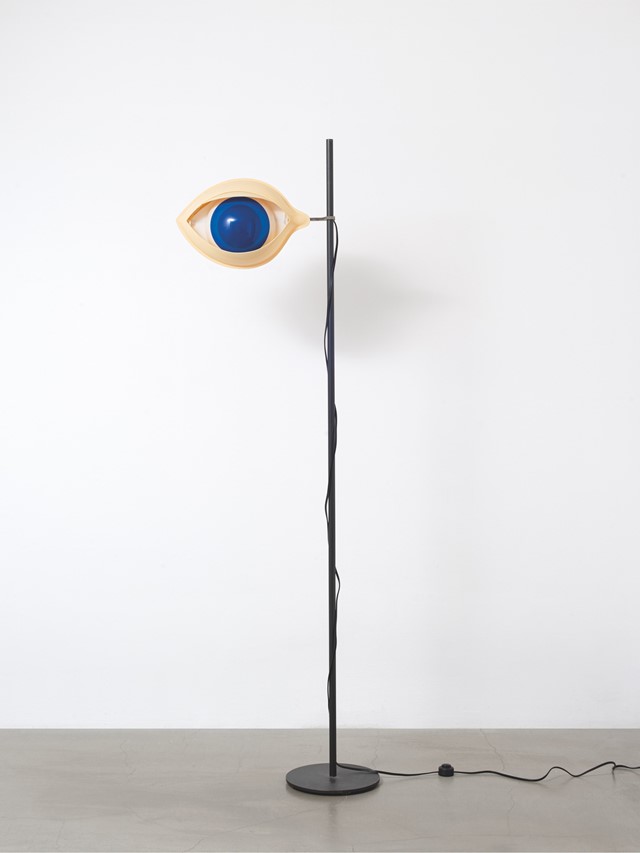
Blue Eye Lamp, 1969/1990
Hannah Martin: “The first Eye Lamp, conceptualised around 1969, was supposedly produced with the help of artist Marcel Broodthaers. According to her memoir, when she showed him her drawing for this piece and the Lips Lamp, Broodthaers took her to a plastic factory in Antwerp where the first ones were produced. Over the years she continued to make them in a variety of colours – one, supposedly, was used as an early rent payment at the Chelsea Hotel.”
Omar Sosa: “It’s one of the most complex pieces that she made. For me, it’s really strong and really, really, really weird. What struck me about it is that she thought of this complexity of the eyelid moving and opening and closing mechanically. There’s the right and the left eye, so then you can compose these faces.”
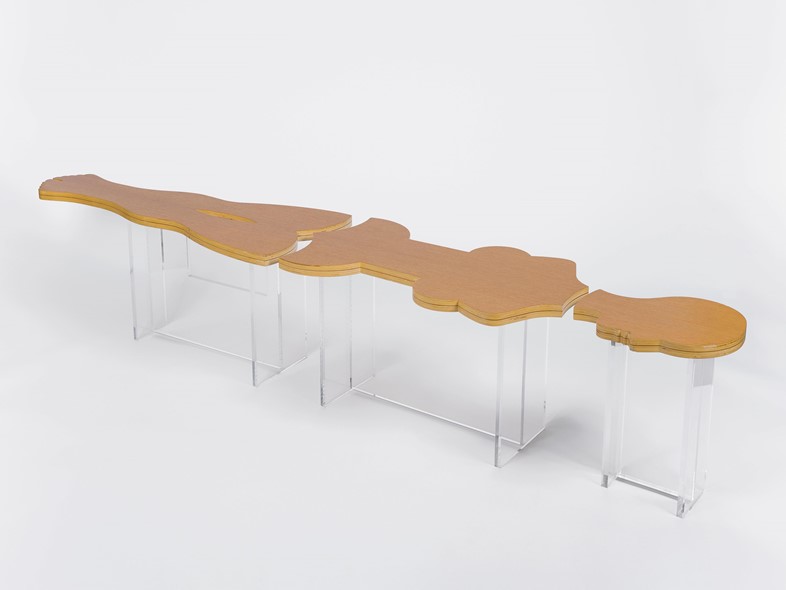
La Femme Coffee Table, 1969
HM: “When Nicola conceived La Femme Coffee Table, she was thinking about a story of a surrealist dinner party, served atop a live woman. For the original, made around 1969, her husband Fred Lanzenberg traced her figure which was cut out of plywood, laid on plexiglass, and sliced into three. When a new one was created years later, the original maquette was lost. Nicola used her grandson’s girlfriend Alex Whyte as a model. I think this is such a sweet story – imagine you just started dating some guy and his grandmother calls you over for this job.
“With regards to some of the furniture pieces, it’s important to remember that Fred – Nicola’s husband until the 1980s – was working in the studio of his uncle, the famous interior designer Henri Samuel, and they collaborated on production. The ideas came from Nicola, but a lot of the production knowledge came from Fred.”
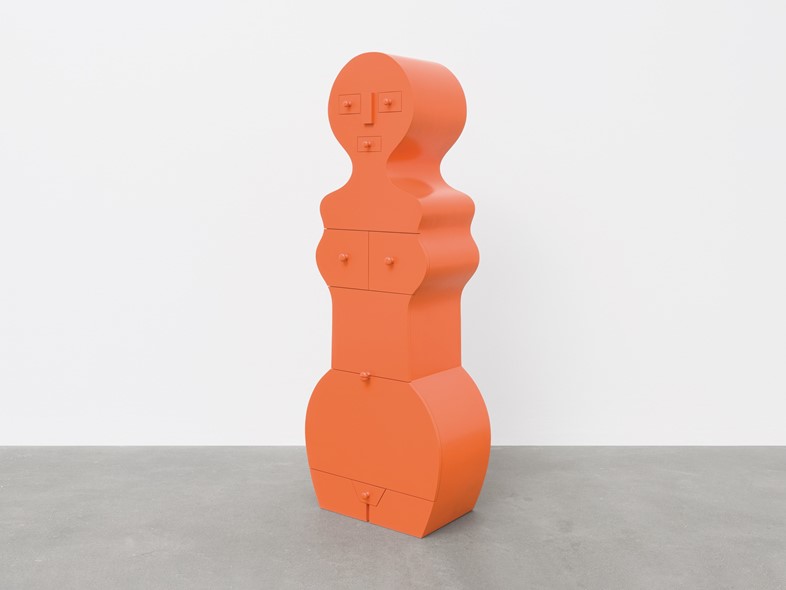
Femme Commode, 19689/2008
HM: “This is probably Nicola’s most recognisable work. She dares her owner or viewer to use her; to tug a breast drawer open by the nipple. The French word ‘commode’ is typically translated as ‘cabinet’ but it can also mean ‘functional’, ‘convenient’, or ‘easy’, giving the title this other connotation: the ‘easy woman.’ In the 1990s Nicola wrote that the piece was ‘a protest against the woman object.’”
OS: “I have to admit, when I first saw this piece at Jim [Walrod]’s place I thought it was probably one of the ugliest things my eyes had ever seen. But Jim’s place was all about things that took a while to grow on you, and for you to acquire that taste. If I were to go piece by piece through his apartment I wouldn’t really like anything, but then it soaks in and you start liking it, and that’s how Jim used to like to live. He was always taking in things that he wasn’t attracted to at first, but he wanted to live with these things and grow that interest. That’s what happened to me with Femme Commode. I felt like this was one of the most ugly things, but then we put it on the cover of Apartamento – just casually because it happened to be a very good shot – and then of course it grew on me. When Jim passed I became obsessed with having that piece and I managed to buy it at auction.”
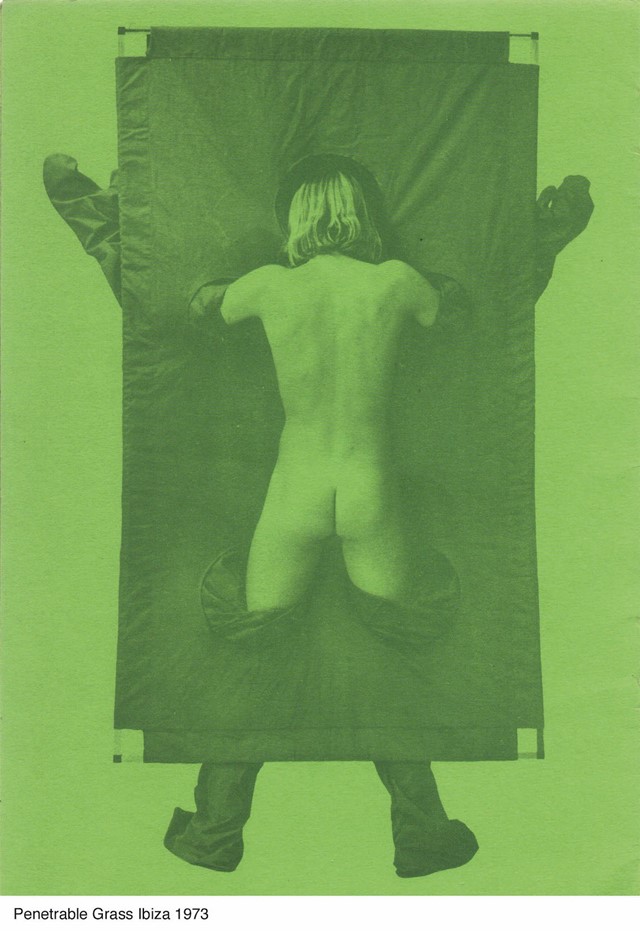
Penetrable Glass, Ibiza, 1973
HM: “When Nicola’s friend and mentor, the Argentinian artist Alberto Greco, committed suicide in 1965 Nicola threw herself against the walls in a fit of grief, thinking she could penetrate them. Greco’s voice was in her head, asking her how she could still be making paintings in the 1960s. From this state of grief she conceived her first wearable canvases, later named pénétrables by the French critic Pierre Restany.
“This particular image is really funny because the person in it is her son, Christophe. He tells the story that she called him up and told him he had to visit her right away, and he thought that something was wrong. He rushed over to the photo studio, and she just told him to take off his clothes and get into the penetrable because she had a photoshoot going on and needed a model – and now his ass is famous via this photo.”
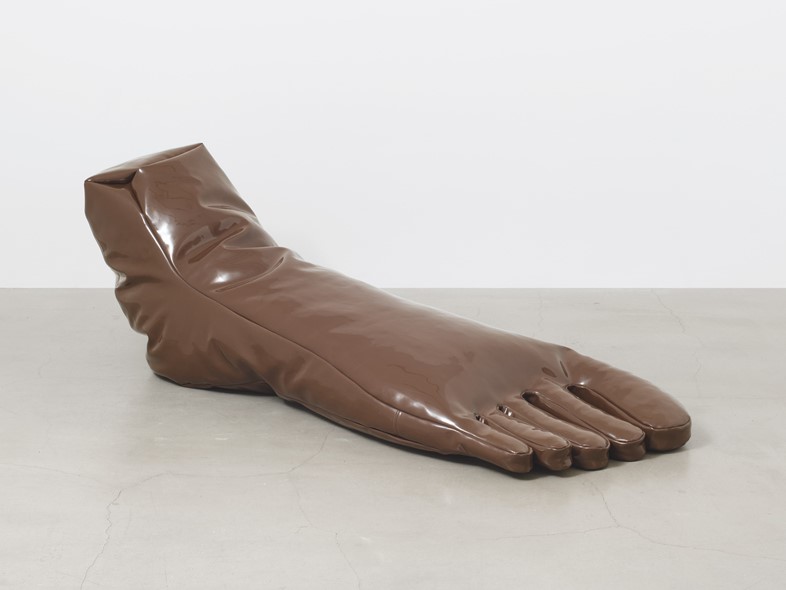
Brown Foot Sofa, 1969
HM: “Omar also has a foot …”
OS: “I first saw the chocolate-coloured one and I thought it was a very interesting object because the proportions are very special. Somehow the proportions are very feminine and delicate. It’s very beautiful. Nicola was really good at that. The vinyl glossy finish is incredible, and then combined with those colours … It is such a weird object, again, and it changes a room so much. I remember when I got it and I put it in my New York apartment, I was like, whoa. Everything changed so much because it’s such a weird thing to have.”
HM: “A Red Foot sofa was Nicola’s first piece of functional sculpture, created in the late 1960s when she was spending some time in New York. This is what she wrote in her memoirs: ‘There’s no furniture in the loft and I make a huge foot sofa whose leg is a column coming from the ceiling. I don’t yet know that I have just made my first functional sculpture.’ It was in downtown New York that she became fascinated with rolls of plastic and vinyl she saw in shop windows. It was the material of the moment.”
Nicola L: Life and Art is published by Apartamento and is out now.
